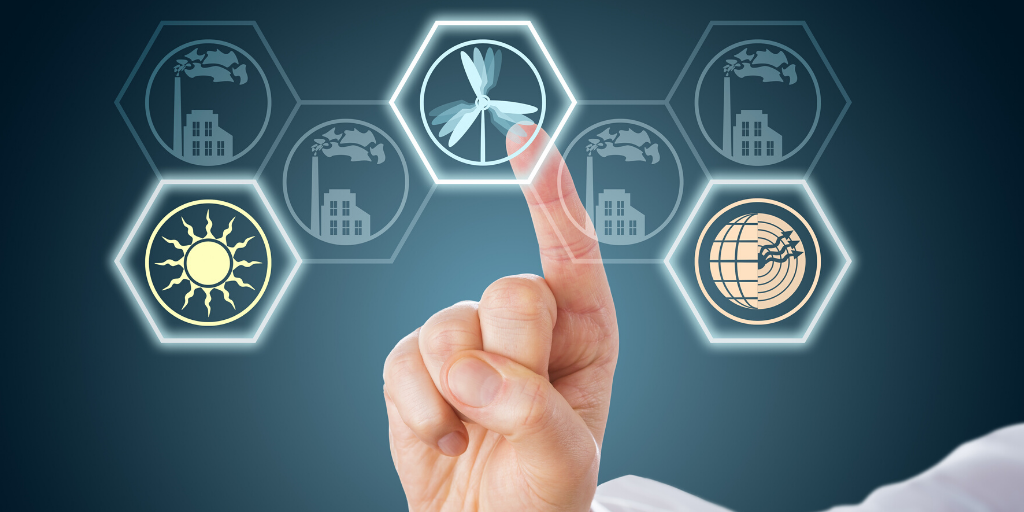Innovation energy transition privateflex energy consumption ecosystems
It’s high time to tap into the opportunities of climate change.

Fires in Australia, floods in Venice, windstorms in Flanders and rising sea levels all over the world: there is no doubt in most people’s minds that the recent natural disasters are not just a random series of events. Yet we still tend to forget that climate change concerns each of us, demanding concrete actions and investments from nations, organizations and citizens alike. The task at hand is definitely not an easy one, but here’s the upside: climate change and the need to lower CO2-emissions in particular spark entrepreneurship, drive research and innovation, and even create new jobs (albeit it in other domains than the traditional ones). If successfully tapped into, the war on climate change will lead to better and healthier lives for all. But where to start? No worries. We got this!
Let’s focus on the energy transition first
Actions are required on multiple levels and they need to be executed in a certain order to succeed. Because why continue electrifying our transportation if the electricity our ‘green cars’ use is produced by coal-fired power plants, right? We believe that focusing on completing the energy transition first is key to tackle climate change, as energy consumption currently is still causing a huge, if not the major part of the world’s CO2 emissions.
In 2019, global CO2 emissions amounted to a staggering 33 gigatons. The stakes are higher than ever – but so are the ambitions. Budgeting 180 billion euros for energy transition per year up to 2021, Europe is determined to finish top of the class. The goal is to be completely carbon-neutral by 2050. Even large cities such as New York have their own decarbonization strategy in place to produce and use zero-emission electricity by 2040. The (preliminary) result? After two years of increases, the global CO2 emission levels are finally flattening!
Even though the future looks promising, most countries agree that moving the energy transition into a higher gear remains a must. We need to focus on awareness-raising among consumers, while businesses must adopt more ecological operations, supported by new technologies where needed.
.png?width=1000&name=Ontwerp%20zonder%20titel%20(53).png)
Raising Awareness
If we want to change consumer behavior for good, more effort needs to be made to raise awareness around energy efficiency. As buildings are by far the largest energy consumers, special attention must be paid to energy efficiency in the construction industry. As you read this, smart technologies are being implemented in buildings, renovations are increasingly encouraged and rewarded, and campaigns to increase consumers’ energy awareness rolled out. For an example of a low-entry solution to get consumers involved, be sure to check out our Maka platform.
Acting and thinking in ecosystems
For the world to enjoy a sufficient and constant supply of green energy, more renewables must be included in the grid fast. More advanced storage technologies as well as a revised mix of different utilities are needed to tackle supply intermittency. In this context, Eoly, Parkwind and Fluxys’ recent plan to set up a new power-to-gas facility in Zeebrugge is a great example. The initiative will see wind converted into electricity in order to form green hydrogen, which can then be transported by – and stored in – the existing natural gas infrastructure. This green hydrogen will be used for heating, industrial processes and/or transportation purposes, causing zero emission. It goes to show that organizations who act and think in ecosystems really enable themselves to innovate the most, and create sustainable new solutions accordingly.
Extra security measures
As renewables and intermittency solutions are expected to be insufficient by times, or better said, tend to come with a fair share of uncertainty, we will need to put other security measures into place. By further connecting different national grids and improving collaborations between countries, supply can be secured when there is not enough solar or wind energy to get by. In the end, each national model needs to adapt to these new evolutions anyway. So why not extend the European clean energy plan with a new European rulebook and ditto processes to facilitate a true European and unified market model? Interesting food for thought indeed, if we may say so ourselves.
Crowning the end-customer king
Let’s end our opinion piece by looking at putting the customer first. We believe it’s high time for the utilities sector to truly start involving their end customers. The latter deserve, or better said, need more freedom of choice, less regional restrictions, better value for money, smart solutions that regulate their consumption and production patterns, and a platform where they can buy or sell energy and overcapacity.

Currently, various ecosystem initiatives exist but they do not necessarily take the end customer into account. We are convinced that the beforementioned changes need to be implemented for the customer to receive maximum value for money. Take our Zoë platform, for example, where consumers can select their own green producer. While surely not without benefits, the platform is not really self-sufficient in our current market model. Our PrivateFlex pilot project is another example of working in an ecosystem with various partners. PrivateFlex valorizes overcapacity for regular B2C customers, without disclosing their personal information.
Combat climate change together with us.
A lot of challenges and even more opportunities lie ahead in the coming decade. Nevertheless, we will continue to experiment with new business models and technologies to combat climate change, and you’re cordially invited to join us! Our next Hackathon is coming up in May. See you there?




